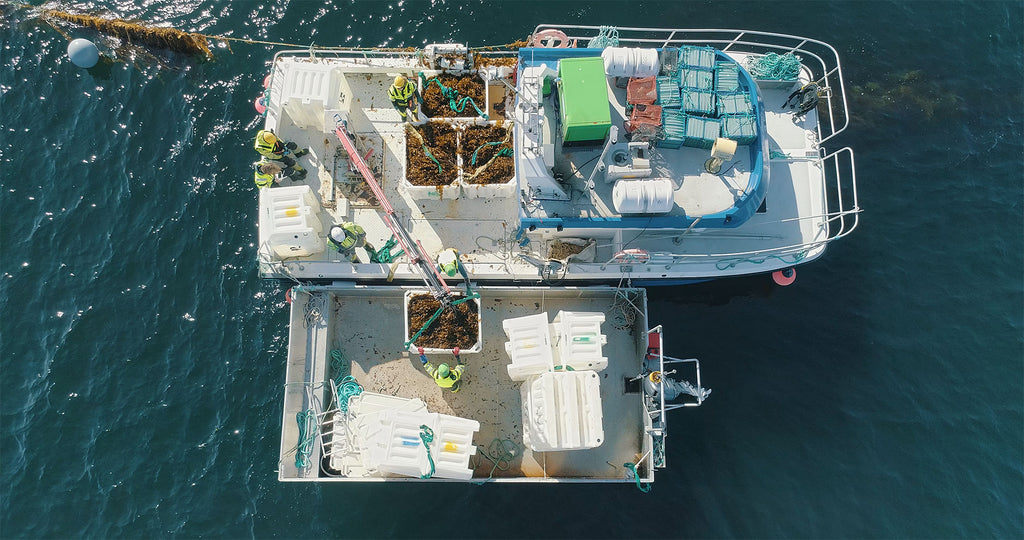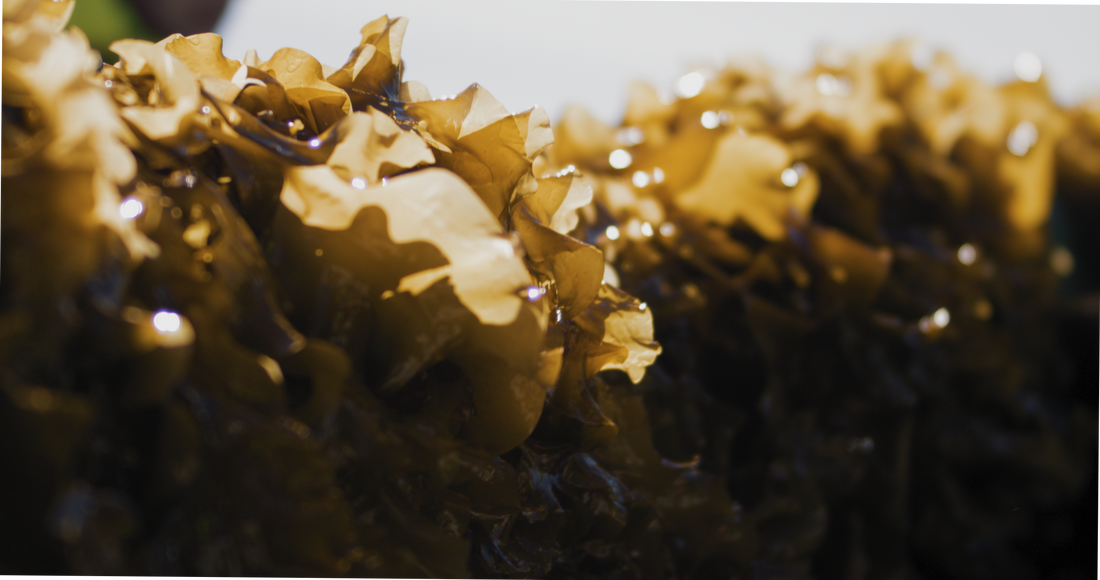Seaweed is a zero-input crop, meaning it grows with no fertilizers, no feed, no pesticides, no fresh water and no arable land. So doesn’t this make all seaweed a glittering embodiment of health for person and planet?

Seaweed Harvest 2021 — Seaweed Solutions
Not exactly. The majority of the seaweed we eat today is grown in China, Indonesia, Japan and Korea. Collectively, these aquaculture super powers produce more than 25 million tons of seaweed each year. Most of this seaweed is of the highest quality and much of it farmed responsibly.
But here’s the catch: some of this crop is produced in contaminated waters with little or no environmental regulation or food safety testing. In turn, much of the seaweed we know is dried for export so when it arrives in Europe, it is rehydrated and dyed with additives to make it look more green and appetizing. And that's not considering the environmental impact of transporting the seaweed.
While it is FAR from all farms we're talking about, in some cases, the sheer scale of some seaweed farms lead to the opposite of what they have potential for - they degrade water quality, increase algal blooms, and cause fish die-offs. We believe there’s a better way!
Plus, as a Danish company, we are proud to partner with our nordic neighbor and reduce the distance between the farm, our production facility in Jutland, Denmark, stores, and you, dear eater.
So, I ask again, doesn’t this make seaweed a glittering embodiment of health for person and planet? We think so.
